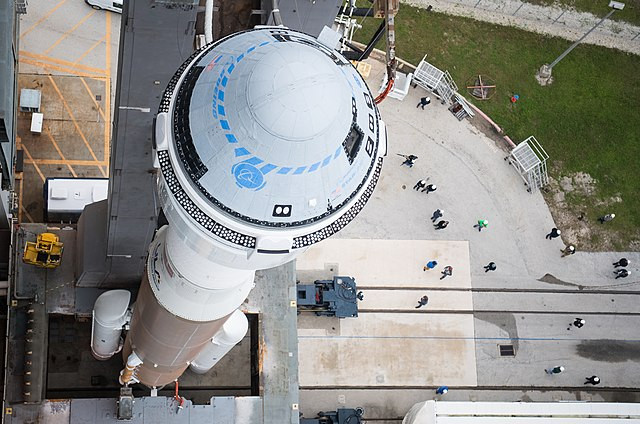Boeing's CST-100 Starliner, designed to transport astronauts to and from the International Space Station (ISS), is currently facing significant delays. Initially scheduled to launch its first crewed mission on May 6, the spacecraft remained earthbound until early June, when it finally docked at the ISS. However, its return has been repeatedly postponed, with the latest delay pushing the expected landing to July 2 at the earliest, over two weeks past the original date.
The primary issue causing these delays is a series of helium leaks in the Starliner's propulsion system. Helium is crucial for controlling the amount of propellant that reaches the ship's thrusters, similar to the role of power steering in a car. Although these leaks were detected before launch, they were not considered severe enough to halt the mission. Now, NASA officials are prioritizing a thorough investigation into the problem.
"We are taking our time and following our standard mission management team process," said Steve Stich, manager of NASA's Commercial Crew Program. "We are letting the data drive our decision-making relative to managing the small helium system leaks and thruster performance we observed during rendezvous and docking."
Fixing this issue from space is not an option. Michael Lembeck, a clinical professor of aerospace engineering at the University of Illinois, explained that various factors could be responsible for the helium leaks, such as assembly errors or unanticipated forces affecting the helium tanks. The service module, which houses the engines, fuel, and helium tanks, is not designed to return to Earth and will burn up in the atmosphere during re-entry. This makes it crucial for NASA and Boeing to resolve the issue now to ensure the spacecraft's safety and reliability.
Concerns have arisen regarding the safety of astronauts Butch Wilmore and Sunita Williams. The anxiety is particularly acute for Williams, whose friend and fellow astronaut Kalpana Chawla died in the space shuttle Columbia disaster in 2003. However, NASA has reassured the public that there is sufficient helium on board to safely return the Starliner to Earth. At a June 18 press conference, officials emphasized that the spacecraft requires seven hours of helium for the return journey but has 70 hours' worth available. If the leaks worsen, the crew could remain on the ISS until another return option, such as a SpaceX Dragon spacecraft, becomes available.
Originally, the plan was for Wilmore and Williams to spend about a week at the ISS before returning to Earth. However, issues with the propulsion system, including additional helium leaks detected in orbit and malfunctioning thrusters, have extended their stay. As the Starliner approached the ISS on June 6, five of its thrusters malfunctioned, delaying the final approach by over an hour. NASA and Boeing continue to monitor these issues as they plan for the capsule's return.
"We are taking our time and following our standard mission management team process," reiterated Stich. "We are letting the data drive our decision-making relative to managing the small helium system leaks and thruster performance we observed during rendezvous and docking."
The Starliner's test flight is critical for demonstrating its capability to safely transport astronauts to and from low-Earth orbit and assessing its various systems in space. The launch itself faced numerous delays and cost overruns before finally lifting off on June 5, years behind schedule.
NASA has indicated that the astronauts' return could occur after a planned spacewalk at the ISS on July 2. The ISS has sufficient supplies to support the extended stay of Wilmore and Williams, ensuring no immediate rush for their departure. During their time at the ISS, the astronauts are assisting with various tasks and conducting tests to aid in NASA's certification process for the Starliner.
Wilmore and Williams are currently living on the ISS with seven crew members who were already stationed there: NASA astronauts Michael Barratt, Matt Dominick, Tracy Dyson, and Jeanette Epps, and Russian cosmonauts Nikolai Chub, Alexander Grebenkin, and Oleg Kononenko. Their extended stay has allowed them to contribute to the ISS's ongoing missions and carry out additional tests.
"The crew's feedback has been overwhelmingly positive, and they know that every bit of learning we do on the Crew Flight Test will improve and sharpen our experience for future crews," said Mark Nappi, vice president and program manager of Boeing's Starliner program.
Boeing aims to eventually provide routine flights to and from the ISS for NASA, similar to the commercial service that SpaceX has been offering since 2020 with its Crew Dragon capsule. Despite the current challenges, the lessons learned from these delays and technical issues are expected to enhance the Starliner's performance in future missions.






